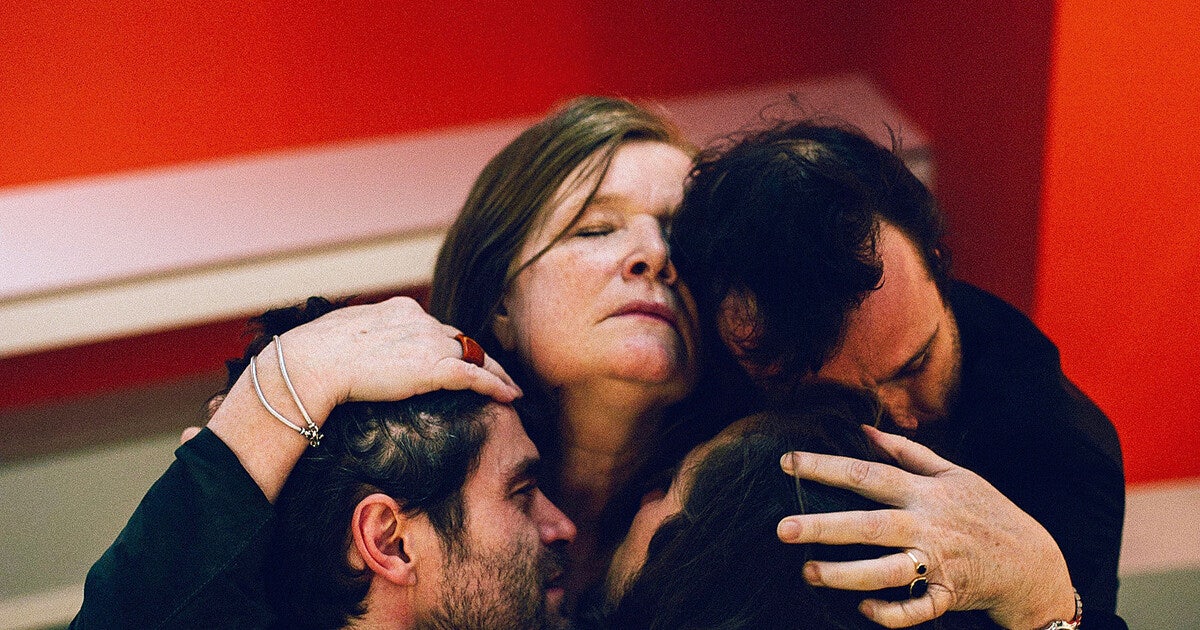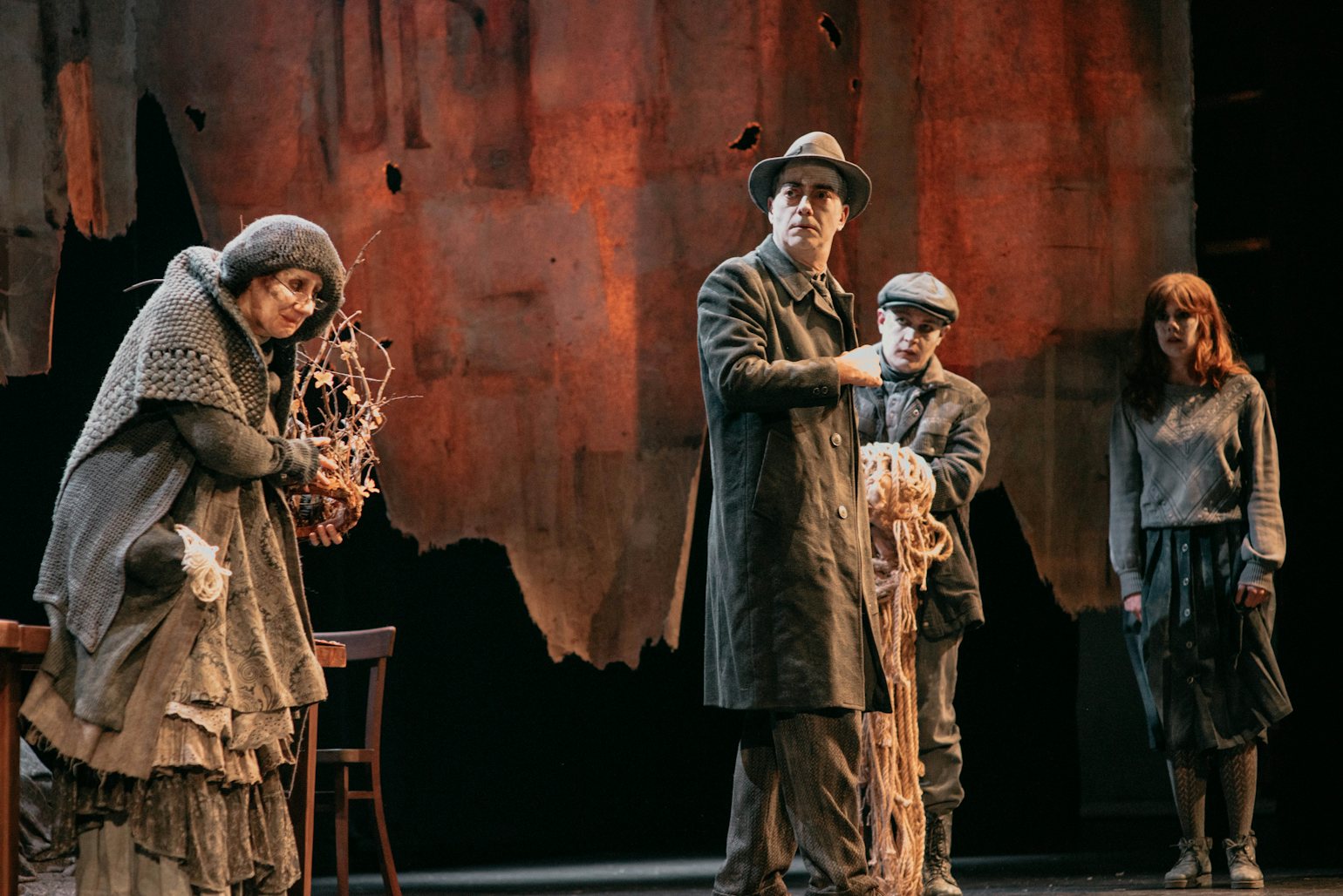Drama is an art in the here and now
"Tom Lanoye (b. 1958) is without any doubt Flanders’ most visible, most celebrated and most versatile writer." Not our words, but those of Erwin Jans, dramatist for Toneelhuis in Antwerp. He teaches drama at the KU Leuven and at the AP University of Applied Sciences and Arts Antwerp. He also writes about theatre, literature and culture for several magazines. At our request, he has written an article about the theatrical repertoire of Tom Lanoye, who just received the Grand Prize for Literature, a prestigious triennial award recognising authors of significant literary contributions in the Dutch language area.

Tom Lanoye is a novelist, playwright, poet, essayist, columnist and performer. Although mainly known for his novels and his political-polemical writing, his recent receipt of the Grand Prize for Literature was partly in recognition of the importance of his dramatic work, in which he poses ethical questions and connects the power of rhetoric with the impact of emotion.
The angry young man of Flemish letters
Lanoye made his debut in the 1980s. With his direct and challenging tone, and lack of respect for sacred cows, he soon became known as the ‘angry young man’ of Flemish letters. In the years when he was starting out, he placed the emphasis on entertainment and provocation, but since the early 1990s he has presented himself as the public conscience of progressive Flanders.
He has taken a stand against racism, and against the discrimination faced by homosexuals and minorities, as well as championing the multicultural society.
He has also shown intense concern regarding the situation in South Africa, his second homeland. He regularly appears as a guest on current affairs programmes on radio and television, in both Flanders and the Netherlands, and is not afraid to speak out explicitly on burning social issues.
The shop counter as a stage
Ever since the start of his career, Lanoye has had a special relationship with the theatre. His mother was a flamboyant amateur actress. In his much-praised novel Speechless (2009), which was made into a film, he describes how his mother lost the power of speech after a stroke. Lanoye regards even the butcher’s shop his parents ran as a form of theatre. ‘The shopkeeping environment in which I grew up has something theatrical about it by nature. A shop counter is a stage. The same jokes, the same rejoinders: stage-managed conviviality.’ He also talks of ‘the pathos of opera, the high mass of the Catholic Church’ as he reveals the roots of his passion for theatre.
Lanoye is fascinated by the intensity, the magnification and the mirroring effects that are specific to the theatre, and by the opportunities it offers for criticism, grotesquerie and satire.
Not just writing but performing too
Lanoye sought the limelight of the stage right at the start and continues to do so to this day. His attention to cabaret and to poetry as performance is one way of opposing an all too elitist and academic conception of literature. Furthermore, his fascination for the stage gives him an opportunity to use a variety of means of expression.
I’m not a writer, by the way, but an author. A writer only writes, whereas I look at all possible ways of getting texts to the public.Tom Lanoye
Throughout his career he has put on shows in which he performs poetry, extracts from his novels and scenes from his plays live, sometimes accompanied by music or in a multimedia context.

The expressive possibilities of Flemish
Lanoye’s first experiment with writing plays was ‘The Canadian Wall' (1989), which he wrote in collaboration with his contemporary Herman Brusselmans. ‘Heartless family drama about football, drink and Flanders,’ as it was announced at the time. It’s a playful, satirical and cynical work, with an important place reserved for references not just to football but to Hamlet and to the theatre itself, a stylistic device he explores further in later plays. ‘Jules and Alice’ (1991) – an adaptation of one of the stories from his fiction debut A Butcher’s Son with Glasses (1985) – is a tragicomedy that looks in flashbacks at the relationship between a car mechanic called Jules who has a passion for car wrecks, and his wife Alice. In common with many playwrights of his generation, for the language of the play Lanoye makes use of the expressive possibilities of Flemish. The same goes for ‘Blankenberge’ (1991). While in Flemish theatre from the 1980s onwards the classical theatre script was called into question, Lanoye has remained faithful to dramatic conventions such as plot, character, psychology, conflict and dialogue.
He believes in the power of the dramatic structure as an appropriate expression of the issues and tensions of our time.
Ten-hour linguistic spectacle
Lanoye loves intense emotions and moral choices that tear his characters apart inside as well as setting them against one another. In his mature dramas he seeks out the interface between the personal and the political. Power and manipulation, deceit and betrayal, hatred and jealousy, blind passion and calculating cynicism: Lanoye never avoids intense feelings that are human, all too human. To put them into drama he draws lessons from the greatest playwrights and from contemporary theatrical practice. His breakthrough as a writer for the stage was the marathon project ‘To War’ (1999), which he created with director Luk Perceval. The ten-hour performance is based on the five royal dramas by Shakespeare about the Wars of the Roses between the House of Lancaster and the House of York for the English throne. It was the first time he had written in iambic pentameters, a metre he has continued to refine.
The language of ‘To War’ is a melange, a rap in different tongues (Dutch, French, English and German) combining different registers, full of references to high and low culture, poetic and vulgar at the same time, sampling both literature and slang.
Lanoye convinced friend and foe alike with this virtuoso work.
Classical works versus experiments
‘To War’ opened up new possibilities for Lanoye as a re-translator and adapter of major pieces from the repertoire. He rewrites the classics from the starting point of their own rhetorical traditions (the Greek tragedies, a lot of Shakespeare, but also Goethe, Chekhov, Albee and more), introducing contemporary themes and using familiar vocabulary. He has written a number of his best plays that way. His ‘Mamma Medea’ (2001) is based on both the tragedy of Euripides and the story of the Argonauts by Apollonius of Rhodes, which enables him to include the prehistory of the play. Lanoye leaves out the choir and concentrates on the tough and merciless confrontation between Jason and Medea.
Confident of his ability, Lanoye began to experiment with new forms of theatre. ‘The Josses. Fall and Revival of Solidarity' (2004) is a highly wrought play in which everyone is called Jos. It undermines any dramatic structure. It can be performed as a monologue, but it can also be played by twenty actors. ‘Diplodocus Deks. Triumph of Archaeology' (2004) is described by the author as a tragicomedy of democracy. It’s the story, told backwards, of a community torn apart by progress.

Social engagement
From the 1990s onwards, social themes come far more to the fore in Lanoye’s work. In his novels a development takes place from ‘small’ autobiographically tinted stories (A Butcher’s Son with Glasses) to major stories about abuses in Belgian society such as ‘The Divine Monster, ‘Black Tears' and The Third Marriage, and in our globalized world, such as Fortunate Slaves. Flemish collaboration during the Second World War is of perpetual fascination to Lanoye, as we see in his novel The Turntable. The same applies to his plays. ‘Fort Europa’ (2005) is one good example. It’s a hybrid text consisting of seven monologues by archetypal characters that could have been created for the theatre, but it can also be read as a novella. Europeans can become true Europeans only by leaving the fort, is the surprising conclusion arrived at by three prostitutes at the end of the play.

Contemporary themes
Drama is an art in the here and now. In Lanoye’s scripts – whether they return to the Greek tragedies, to Shakespeare or to Chekhov – contemporary political and social topics are always in evidence. In ‘Atropa. The Revenge of Peace' (2008), Agamemnon uses words spoken by George Bush Jr. and Donald Rumsfeld during the invasion of Iraq. The political arguments in ‘Mephisto For Ever’ (2006) refer to the possibility, real at the time, of a breakthrough by the right-wing Vlaams Belang in Antwerp and to the moral choices confronting the artist, in this case the dramatist, at that moment. In ‘Blood and Roses. The Song of Gilles and Joan' (2011) the interrogation of Joan of Arc and Gilles de Rais by a cardinal makes reference to the paedophilia scandal in the Catholic Church. ‘Revue Ravage. Death of a politician' (2015) is about the malleability of a politician, and in ‘GAZ. Plea of a Doomed Mother' (2015) we hear the mother of a jihadi fighter speak. In ‘Queen Lear' (2015) the old King Lear is replaced by a powerful businesswoman, who divides up her empire between her three sons, while in ‘The Russians!' (2011) Lanoye combines scenes from ‘Ivanov’ and ‘Platonov’, two scripts by Chekhov, adding several new scenes of his own. He sets the modern classic ‘Who’s Afraid of Virginia Woolf?’ by Edward Albee in the theatrical milieu, which gives him the opportunity to compile an inventory of contemporary topics: the tension between the artistic and the commercial, the importance of the repertoire, the whiteness of the theatre, the representation of women and of ethnic minorities, political engagement, institutions, but also overpaid dramatists, audiences that keep coughing, theatre critics, the aesthetic theatrical elite, post-post-dramatic theatre and so on. Everything is caught in the rhetorical whirlwind of Lanoye’s play and shaken up.
With ‘Oustfaust’ (2022), a rewriting of Goethe's 'Faust 1' and 'Faust 2', Lanoye returns to the Faust theme he addressed in ‘Mephisto For Ever’, but this time he has his play widen out to encompass multicoloured scenes and characters, until it falls somewhere between video clip, rap session, battle, drag show and performance.
Master of his art
Like many contemporary playwrights, Lanoye creates his plays for a specific theatrical practice. In other words, he knows who is going to direct them and which actors will be playing the roles. He likes to write for large ensembles and has worked with the most important Flemish and Dutch directors of his generation, including Guy Cassiers, Ivo van Hove, Luk Perceval and Johan Simons. He is one of the few contemporary Flemish dramatists whose play scripts are seen as organically a part of literature.
More even than the novel and polemic, drama gives Lanoye space to combine his rhetorical virtuosity, his baroque feeling for drama, his love of satire and his social engagement.